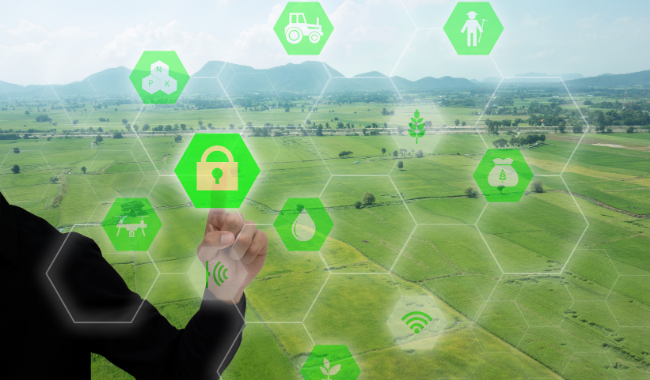For example, from the Internet of Things they build a sensor network that captures weather information in the field. Artificial intelligence processes it and, through machine learning, predicts when a frost will occur, allowing the farmer to anticipate in decision making.

Verbatim
Our driving force is to generate impact in the economic and social sectors. From there we work in all lines of science and digital technologies. In Chile we are in areas of the environment and precision agriculture, as well as in astronomy and mining; i.e. sectors that represent economic income and social impact for Chile.
Director of the French Institute for Digital Sciences and Technologies (Inria) Chile
And they do so by acting as a bridge between local academia and Inria researchers in France. And agriculture is one of those priority sectors, because of the need to double the amount of food on the planet in the next 30 years, but in the same area. These are devastating figures and for agriculture it is a major challenge to find solutions that allow the possibility of generating food through sustainable, environmental and economic agricultural processes.
How could digital technologies change that?
Although scientific and technological change, as well as the application of knowledge, as is well known, start from chemical and biotechnological solutions, today they are growing from solutions that use digital technologies. Agrotechnology seeks to use methods to optimize production and make more efficient use of resources. There are examples of different types, such as drones, more sophisticated irrigation systems, harvesters... this is technology, not just science. At Inria, we are moving towards smart agriculture, which is state-of-the-art digital technology. These are technologies that start from science, management, processing and data management. All this is important to optimize farmers' decision making through the delivery of accurate, reliable and timely information to manage the data of the crop operation and allow decisions to be made in real time.
In other words, machines that learn...
It is to seek the most fluid interaction between humans and computation. These are systems that, through the use of artificial intelligence, computational intelligence, use learning from data acquired through sensors and are capable of predicting behavior. An example is Frost Forecast (see box), an artificial intelligence precision agriculture system, which is already being tested in Chile, that allows predicting abnormal situations such as frost, so that the farmer can make decisions in advance. Or Odor Tracking, which executes a mathematical model of the dispersion of odors from a processing plant considering the real time wind conditions that can alert the surrounding communities. There are other projects that, for example, investigate through complex models the use of algae for bioenergy or to sanitize sewage water, which can then be used for irrigation. Or the use of bioinformatics to evaluate the diversity of biosystems. In other words, agricultural sustainability through innovation and technology.
At what level is Chile in this type of innovation?
In Chile, this is a very big challenge. Agriculture represents up to 4% of GDP and is a priority sector, in addition to the pressure on the sector, both in Chile and in the world, as a result of the impact of climate change, which clearly affects farmers' production.
Today there is a great need for systems and platforms that allow farmers to make early decisions based on a greater amount of data and information to be analyzed and made available to the farmer.
Is this work developed in France and applied in Chile?
We can bring science and technology or do it cooperatively with Chilean teams and then implement it, as is being done. We believe that the great challenges of humanity will be solved through multilateralism, where we can all cooperate.
But in any case, these are technologies that have intellectual property....
Our goal is to develop and test this advanced knowledge. Then we make it available for others to use or build upon. In other words, this knowledge is open source. We believe this is the way to accelerate and democratize access to advanced knowledge in the industry.
The idea is that the technology is used and that through it we can have an impact on solving problems for the greatest number of farmers.
